Text
Dr. Renee Richards: Professional Tennis Player, Doctor, and Veteran
Dr. Renee Richards paved the way for trans athletes today to stand up against discriminatory practices in sports organizations.

Richards, a Yale grad, an eye surgeon, a Navy vet, a great amateur tennis player and athlete, medically transitioned and moved to California to start anew.
Richards continued playing tennis in amateur circuits, and given her sheer skill and athleticism, got professional attention. Richards was outed, using her amateur career prior to her transition. The USTA responded by requiring all tennis players who were women to take a Barr test, to confirm that they had two X chromosomes. Richards refused, and was banned from participating in the 1976 US Open.
Richards sued the USTA in in the New York State Supreme Court for her individual right to participate in the next US Open, without a Barr Test, citing that the USTA's implementation of the Barr Test was discriminatory. Richards won, and played against Virginia Wade in the 1977 US Open.
Richards playing in the US Open, and having such a highly publicized court case, served as great representation for trans youth. While there was some trans representation in the art realm, or literature, or in products of activism, not everyone would be able to see this, or would be allowed to, as in the case of trans youth. Sports, however, are watched by everyone, they are incredibly accessible and viewed by families and children. Even the strictest of parents don't usually prevent their children from watching or reading about sports or the news. This would allow trans youth, or those who were closeted a chance to see someone who dealt with the same discrimination, the same dysphoria, the same fight, the same unaccepting, cruel, hegemonic world, playing professional sports on television, after a successful court case that allowed her to continue to play after being outed, and refusing a Barr Test.
Here is a video of Richards playing in the US Open in 1977, following her successful suit of the USTA:
https://www.youtube.com/watch?v=C5G6GbBFFAc
While Richards may have lost the match to Wade, in Richards vs USTA Richards won a major victory for trans athletes everywhere, of every sport. Even though the court case was specific to her individual right to participate without taking the Barr Test, Richards's court case can be referenced to battle similar chromosomal testing or other "sex verification" testing used by sports organizations to disenfranchise, demonize, and demoralize trans athletes/trans youth who aspire to be professional athletes.
Dr. Renee Richards is still alive today, and has done a few interviews over the years with NPR, The New York Times, and other major news organizations.
Works Cited
Amdur, Neil. “Renee Richards Ruled Eligible for U.S. Open.” The New York Times, The New York Times, 17 Aug. 1977, www.nytimes.com/1977/08/17/archives/renee-richards-ruled-eligible-for-us-open-ruling-makes-renee.html.
Conan, Neal, and Renee Richards. “'The Second Half of My Life'.” NPR, NPR, 8 Feb. 2007, www.npr.org/templates/story/story.php?storyId=7277665.
Newell, Sean. “Throwback Thursday: Transgender Tennis Trailblazer Renée Richards Takes on the U.S. Open.” Vice, Vice News, 25 Aug. 2016, www.vice.com/en_us/article/4xzabw/throwback-thursday-transgender-tennis-trailblazer-rene-richards-takes-on-the-us-open.
Supreme Court, Special Term, New York County. RICHARDS v. US TENNIS ASSN. 16 Aug. 1977. Leagle. https://www.leagle.com/decision/197780693misc2d7131654
2 notes
·
View notes
Text
Brief History of the Lesbian Pride Flag design and it's Evolution within the Last Decade
Variation of “Lipstick” Lesbian pride flag (2010)
Emily gwen’s lesbian flag design (2018)
Poc-inclusive lesbian pride flag (circulating now)
I wanted to look into a brief history of the lebsian pride flags and how they have changed over time to become more inclusive. There’s a lot of history that can be looked into each one, and right now I’ve only selected the more widely-accepted ones that have been in circulation, since there are numerous variations and branches of lesbian pride flags that exist or have existed in the past. This is just an overly simplified list of the flags that I have seen circulating in online spaces in the last decade, but wanted to focus on them specifically.
The first flag is a variation of the “Lipstick Lesbian” pride flag (the designer of this variation is unknown). There was quite some controversy with the creator of the flag and the message behind it, mainly due to the fact that it was very exclusionary to GNC, Trans and non-feminine lesbians. Discussion started to uprise on how to create a more inclusive pride flag and stray from the old design and the bigoted ideologies of the creator.
Many designs were passed around but it was Emily Gwen’s design that started to catch traction. One of the primary design choices was to have the inclusion of gender non-conformity, and this is the design that is often seen circulated in the lesbian community today. Gwen stated that she had no idea it would become so popular, but is rolling with it, and encourages people to use the colors and pride flag, but also doesn’t insist it has to be the lesbian pride flag; she states that people can use whichever design resonates best with them.
But I really wanted to draw attention to the latest pride flag that has been circulating in the recent weeks. As I’m sure you’re well aware there are many current events occurring regarding movements such as Black Lives Matter, Abolishing Police and Prisons, and more all occurring at the same time as Pride month. In solidarity with Black individuals and honoring the history of Pride, many folks wanted to create a more inclusive pride flag that includes POC in the flag’s design, which is where the brown stripes come from. Marsha P Johnson was an activist who was one of the driving forces of early Pride movements, Stonewall, and without her and other LGBT POC, Pride wouldn’t be the same.
I wanted to focus on the lesbian pride flags and their evolution because the lesbian identity has been important to me personally, but I also wanted to draw attention how there’s always changes being made within the community to be more inclusive, and it’s important to remember that there’a always ways we can change to reflect all aspects of our communities.
2 notes
·
View notes
Text
Transgender Representation in Films
Representation in media matters. It not only gives us potential role models and heroes, but it also gives us a sense of who we are. Progressive circles often focus on representation because good representation of marginalized voices in communities can send a positive message of empathy for others and compassion for ourselves. It can also help us conceptualize ourselves and make sense of who we are personally. This is relevant in LGBTQ representation, but more particularly transgender representation. Trans representation is starting to appear more in television and movies.
Indya Moore, a nonbinary actor, plays as nonbinary character, Shep, in Steven Universe: Future. Shep is Sadie Miller’s partner who helps Steven process his emotions about growing older and growing apart from his hometown.
https://www.pinknews.co.uk/2020/01/03/indya-moore-steven-universe-future-shep-non-binary-character/#:~:text=Indya%20Moore%2C%20the%20non%2Dbinary,cast%20of%20Steven%20Universe%3A%20Future.&text=Moore%20plays%20Shep%2C%20Sadie%20Miller's,is%20having%20about%20growing%20older.
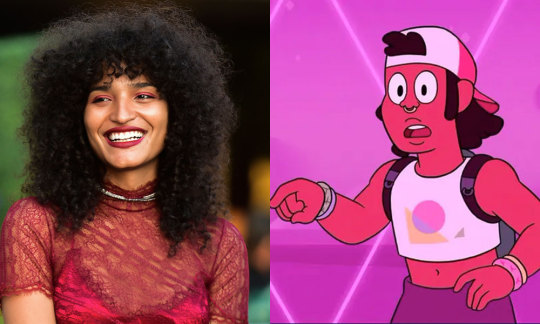
The Danish Girl, 2015 biographical romantic drama. Based on the 2000 novel, about one of the first known recipients of sex reassignment surgery. https://www.youtube.com/watch?v=d88APYIGkjk

Beautiful Boxer, Biography of a transgender Thai boxer Parinya Charoenphol who pursued the sport to pay for her sex change operation.https://www.youtube.com/watch?v=6orM84owB7M
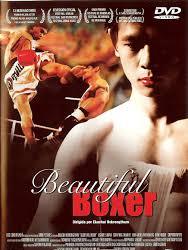
Rocko's Modern Life, Netflix movie features trans character. Rachel, the child of Mr. and Mrs. Bighead. https://ew.com/tv/2019/08/07/rockos-modern-life-movie-trans-rachel/

Fuoristrada, Off Road (2013) Documentary, Biography. Beatrice is a transwoman mechanic and rally rider champion who falls in love with a nurse named Marianna. They fought prejudice in their conservative country and get married in Rome.https://www.youtube.com/watch?v=TQq81OjeUuc

911: Lone Star features a transgender firefighter, played by trans actor Brian Michael Smith. https://www.youtube.com/watch?v=ddhHbMyApuA

Nicole Maines, trans activist, plays Nia Nal in, Supergirl, as a transgender superhero. She is TV’s first trans superhero. https://www.youtube.com/watch?v=scYaIS4XXYU

2 notes
·
View notes
Text
A Conversation Between Helen & Brit Samar Abuya (they/them)
This is a conversation between me and local trans Filipinx artist, Brit Samar Abuya. We covered a lot of ground in our conversation about their identity, life story and art. Warning some parts of this are graphic because we legally need to swear to express ourselves. Before reading our convo, here’s a tough picture of Brit as well as two of their works of art to gain some context.
HS: Hey I’m Helen Soultanian and I’m being joined virtually by Brit Samar Abuya. We are both in Portland in our respective homes because we are in the middle of a global pandemic so we can’t meet face to face. Hello Brit!
BSA: Hi Helen, it’s really nice to see you.
HS: It’s so good to see you! It’s so good to see you. So I’m interviewing you for my Trans Studies class tumblr page…
BSA: Ay, tumblr coming back. I want to say what I think about tumblr in 2020 but we all know what is happening on tumblr in 2020.
HS: There’s no more porn.
BSA: Oh, well. I don’t know what’s happening on tumblr then.
HS: Yeah, because of SESTA/FOSTA they removed porn on tumblr.
BSA: That’s garbage.
HS: That was the only reason to go on tumblr was porn.
BSA: All the free porn, but honestly everyone needs to be paying for their porn.
HS: That’s real. That’s the only way to ethically consume porn.
BSA: Yes. And also looking out for porn that actually is ethical because there’s a lot of porn out there that is not cool at all.
HS: Nooo… That is true, that is true. So I’m going to ask some questions… What is the story behind your name? I think it’s important for trans people you know?
BSA: Yeah I totally get that, that’s cool. So the story behind my name is I wanted to change my dead name because that did not resonate with me and had stopped resonating with me or being okay with me for five years now. Even longer than that. I just didn’t really feel like that was the name for me. So I started to go by Brit which is a shortened version of my dead name but even then people don’t need to know that. Brit is just short for Brit. I used to say Brit is short for Brittle to give people a preface. One of the big things for me in feeling comfortable with myself and my trans identity included actually changing my name because that is a big part of my identity; like your name that is who you are. So you whether you want to give it that power or not, that’s the world that we live in. You’re going to be called by a name. So since we have the power to choose what name we want to go by, I decided to change my name to Brit. And my middle and last name… Middle name is also another name that did not resonate with me and my last name was just a name on my birth certificate of someone who isn’t even my biological parent. So definitely something had to be done because I as an artist didn’t feel like putting my dead name on something that didn’t really express who I am or clearly translate who I am as a trans artist of color. So my new middle name is Samar which is actually the indigenous name of the islands my grandma grew up on. I don’t know a whole lot of history behind that because there’s just not a lot of written documentation of indigenous lands in the Philippines. So that was as far as I could find. And then Abuya is another name for the indigenous lands in the Philippines where my grandma grew up. So I wanted to change it to those names because for me it was a way to honor my culture and honor where I come from even though I am a first generation American like it’s really important for me to honor those things about myself because it’s very much part of how I identify.
HS: That’s beautiful. What are other things that help you feel connected to your culture?
BSA: One of them is cooking. I don’t get to cook a lot of Filipino food. I’m going to say Filipino because I’m being a little lazy and I don’t feel like correcting my non gendered self in saying Filipinx. Filipino food is incredibly centered around a group of people so it’s hard to make it for one person. I want to go to the grocery store and find ingredients so I can start meal prepping big meals for like how you would cook a regular meal and portion it out for myself. That’s one of the big things for me is food. I recently also started reaching out to local Filipino people, there’s not a whole lot. There is like 3 or 4 others that I can maybe name but that’s in my immediate thought bubble right now. Something that I feel has been really important for me being in the whitest major city in America is connecting with people who do come from similar cultural backgrounds as me so that I could not feel so isolated and alone. That was a big thing for me moving here was recognizing that this was not as safe as a place as I thought it would be for me but I’m also thankful for that epiphany because it really helped me figure out and do the work I needed to do for myself to find those safe spaces for myself & my health.
HS: Has there ever been a time where you felt connected to your culture?
BSA: With my chosen family for sure. And my chosen family consists of all sorts of people, like I consider you to be part of my chosen family so it’s very clearly different. But it’s also the same because how I grew up, the family was very close knit and we were up each other’s ass in good & bad ways. And that’s how I feel about the people in my life that I have chosen to stick around with and who I am very fortunate to have people who still want to keep up with me. It’s hard because it’s been a really long time since I’ve been in my home with my family, with my immediate family, so I feel a little detached from my culture just because my mom never got around to teaching me & my siblings how to speak Tagalog, our native language, so we just knew English and we were also believing in what the American dream is for us. When I moved away I was feeling very resentful of how I grew up and I also didn’t have the same tools & resources to understand why I was feeling resentful so I pushed back on that. As soon as I moved away I wanted to be on my own and I didn’t cook any Filipino food. I really didn’t have any community people that I surrounded myself with for a very long time until I moved here & it was so weird.
HS: You grew up in Vegas right?
BSA: Yeah so I grew up in Vegas and I spent most of my life there. I was born in Long Beach, CA and I also lived on the East coast for a short amount of time. So my earliest memories are from living in a small town called Allentown in PA.
HS: Is that like an Amish town?
BSA: Yeah it’s a Quaker town, it’s super small & tight knit. My mom relocated out there to live with my sibling’s biological parent. After a few year, we decided to relocate to Las Vegas, where my grandparents were living at the time, right before I turned 5. I was in Vegas pretty much my entire life but I have memories of other places.
It’s weird because I’m at a place now where I do appreciate Las Vegas as my home because I grew up there even though it’s an absolute shit hole.
HS: *Laughs* Yeah, what was that like?
BSA: Dusty. And dry.
HS: Okay, like literally dust? Or because the people were dusty?
BSA: Both. Both. Attitudes, dusty. People, dusty. It was just hard to not be miserable and that was the general attitude. You would be kind of an asshole and it would be accepted. But it’s a different kind of an asshole because you have people from NYC and they are known to be assholes but they aren’t called assholes, that’s just what they are. But in Vegas, they are assholes in my opinion. I feel like I can say that because I grew up there and I have personal experience of growing up all over that fucking city.
HS: Imaging growing up there is so weird to me.
BSA: It’s weird because people don’t really think about Las Vegas as a place that someone would grow up in. Like I imagine most people would think of the casinos on the strip and I don’t even know what else people think of because what I grew up knowing was that it was an incredibly spread out city so it was hard to get anywhere very quickly. It was very separated by class thinking about it now and thinking about the different neighborhoods I got to live in & experience throughout my childhood. It is very separated by class and that is so interesting to think about now because I have had a taste of all those different bits & parts of Vegas. From living downtown for a little bit to living in the suburbs in a nice bougie ass house with a pool in the backyard. In general it’s suburban but it’s also a party city; it feels like a fever dream to be honest. Because there’s a lot of people in Vegas but they all work at the casinos or work in industries that support the economy of Las Vegas but there isn’t really very much things to do out there. And I’m sure there’s people who will argue with me about that which is fair because I haven’t been there in a long time but from what I remember it was a shit hole. It’s always going to be a shit hole. Even though I love Las Vegas, it’s got a special place in my heart for sure, but I can’t say a whole lot of amazing things about Las Vegas.
HS: What was it like navigating high school as a person of color… were you out in high school?
BSA: Okay so I was out in high school but I was not out to my family until after I moved away and graduated. Being a brown person was not something I thought about, period. A positive side of Las Vegas is that it’s a melting pot of diversity even though there are a lot of redneck white people out there, I grew up and didn’t think about that because I had so many different types of people across different ethnic & cultural backgrounds in my life that it never occurred to me that I had to think differently about myself. I was just someone who grew up in Las Vegas like everyone else there. In highschool I was fortunate enough to go to an arts school so I was low key, high key, very sheltered. It was cool and okay and accepted to be out & open as a queer person. There was a big support club, the Gay Straight Alliance, that was 200 members deep. It was an arts school, it made sense, there were no sports there; it was all theatre kids, art kids, kids who played instruments, jazz kids. It was all of those weirdos put in one school. It was really cool being in that environment and feeling safe, like I did feel safe in my high school when I was there which is really weird to say. I’m sure if I were to nitpick there were moments I wasn’t safe. My school was located in a seedier area of downtown Las Vegas and there would be, for a couple years straight, there would be 2 lockdowns at least because of active shooters. Because we had an open campus closer to a lot of things in seedier areas downtown it was kind of normal & common to experience getting locked down until 3 hours after the school bell gets let out just because that was how things were in town. It was normal for me, I’m sure it was kind of shocking for people who had not experienced that or for the kids who didn’t grow up in neighborhoods like I grew up in where it was a lot more active with police presence or people who didn’t come from affluent communities. Most of my background is not affluent at all but I have experience of being in affluent communities and being in those communities made me understand that people didn’t understand how other people live or how to respond to that. That was very striking to grow up understanding coming from a lower income poor background but I’m also grateful for that because I don’t feel like a ding dong now not having empathy or compassion for people. It would suck to be that person and get called out because that’s embarrassing.
HS: That is embarrassing. So you went to an arts high school, when did visual arts become part of your life?
BSA: It’s been part of my life for as long as I can remember. Growing up I remember my mom loving to make art, be creative and do things artistic in & around our home whenever she could. Even when we didn’t have many things she still figured out ways to create things. That inspired me at a very young age. Me and my sibling started making art in elementary school and entered art contests that made us feel good about ourselves. It was something really wholesome and special growing up at a very young age that I started to figure out what I wanted to do with my life. I was approached in middle school by an art teacher who told me about this art high school. They were like, “You can audition for this high school if you want to. It can prime you if this is what you want to do in life.” And that got me feeling really excited, like I didn’t know there was an art school you can go to. That blew 12 year old Brit’s mind. I told myself I was going to work really hard for those years in middle school because you had to audition with a portfolio to get in.
HS: How has your art, because I know your art as it is now, changed from 12 year old Brit?
BSA: It has changed so much because I realized now that a lot of my, like most people’s art in school or in a structured environment, doesn’t have 100% artistic freedom. Like in school you’re given prompts or different ideas to bounce off of or assignments that can only be so much of you and then there’s the grading/critique aspect. On an academic level, it’s kind of sterile. I recognize the art I created in high school and before I started getting more serious about my art & creating art for a living it was just school art. Technically I’m proud of the skill I got and learned in school but a lot of the art I look at now it’s like oh I did have some creative freedom and I did express myself but I also see that there’s academic constraints on it. Towards the end of highschool I started exploring more with expressing, like expressionism and expressing myself with artwork and what that means to me. I had a conversation with a friend and she was like, “Oh you artwork is like a journal like a live diary.” This was a few years ago and that was exactly what I was doing in highschool, writing deep dark secrets in the background of my artwork not really knowing I was processing stuff for myself or starting to figure out what I really like to do for myself & my art work and how I wanted to create that. That’s sort of what I’m doing now with my art work, it has evolved into the purest form of self expression for self and how I can present that to other people. When I first started making art work more seriously in the past few years, it was mostly just for myself to process stuff. I didn’t have a therapist at the time, I was going through a lot of weird mental turmoil and that was the best way I could find to help process and unpack those things even though I really didn’t know that was what was happening in the moment. I was just feeling all sorts of things, you know any type of creative when they’re in a weird emotional state they want to do something about it. So creating is the way to do it, it has been the way to do it for me. Even if I haven’t been creating as much work as I would like to be, I’ve come to understand that doesn’t matter. The amount of work I put out, if I put out one or two pieces in a year that is enough. Even if I don’t put out any pieces at all in 2020 that is going to be fine and that doesn’t determine my success as an artist because at the end of the day I’m creating my artwork for myself. If people want to consume my artwork and experience my artwork that is a benefit in itself.
HS: Is there anyone that particularly inspires you in terms of your artwork?
BSA: I used to feel like I had a lot of inspiration from artists who were classical artists like Van Gogh, Matisse and Picasso. All of those classically trained artists that people recognize and know & love, I have absolutely pulled inspiration from. Now its very different because I recognize that they are all cis men. They are all white cis men who play upon heteronormative hiearchies in our world. That really fucked me up as a trans person, as a person who was born as female and someone who wants to be an artist (I do consider myself to be an artist), that started to be conflicting to me. So I stopped pulling so much inspiration from them because it didn’t feel right and it felt like I was honoring false ideologies. Now I would say my inspiration comes from contemporary young artists who are on instagram who don’t have their shit together and don’t come from classical or technical backgrounds because they are out here expressing themselves in the way they know how. You can feel the passion and the power behind it, it’s just as good as a masterwork. There isn’t anyone specific because there are so many contemporary artists out there but I love to go on the search for artists from contemporary museums- I mean contemporary galleries because fuck museums. They are out here looting countries, not giving their shit back and saying we are out here rioting; that’s garbage. That is a whole other conversation to be had, I’m very happy to not be hyped up about museums anymore.
But I have been trying to keep up with contemporary gallery spaces, specifically spaces that are curated and owned by black & brown people. It’s important for me to uplift those voices and also feel empowered in uplifting my voice as well by finding people who create artwork in the same way that I create artwork or feel the same way. That makes me feel inspired. There’s a few people in town, there’s one artist particularly: their name is Laura Medina. I’ve been a big fan of their work for a really long time. It’s so multidisciplinary and across the board an experience in itself, it reminds me of my work even though it’s very different. It makes me feel good to know someone in real life and see their work grow & evolve over time is really awesome.
HS: You touched on “fuck museums” which I agree with…
BSA: Fuck museums.
HS: Yeah. We are at a huge shift culturally in the US right now, what is your hope for the future in terms of the art world as a trans brown person?
BSA: I think there’s a few different outcomes I have thought about regarding our art world and how we consume art and what values we place on the art we consume in the world today especially that is considered to be a contemporary artist. I think in the case of museums there is the option of returning the looted artwork from all of the countries it was stolen from and leaving it at that. Maybe even apologizing for stealing that because the only reason why it is in a museum and why the museum is up in the first place is because they went & looted someone’s country. Typically a black or brown country. The other option would be, if for some reason they can’t do that, for all of the proceeds from the museums that have looted artifacts to go back to the countries they originally came from. That’s the very bare minimum they could do if they are not going to return these treasures, these artworks which are pieces of people’s identity which is huge. Artwork is very much part of a person’s identity and how they are able to express themselves so it is wild for these European countries to fight back and be defensive when it comes to black & brown people wanting to reclaim their identity essentially. “We actually figured out you guys fucked us over and we want our stuff back, period.
So that’s my hope for museums. Another hope would be ideally a museum that would have collections of artwork from people that didn’t get their shit stolen or collections from people who are alive today. There’s so much amazing, beautiful, powerful, emotional artwork that is being produced by artists who are alive today that should get the same recognition as cis het white artists who are in museums and applauded for their hard work and creativity. Even though they stole all of those ideas from black and brown people. I went to this really amazing exhibit in San Francisco about how eastern culture influenced western art in the 19th century. A lot of our favorite classically trained artists took inspiration from Asian, Southeast Asian countries when they opened their door to colonizers. It was really wild to see all of these artworks that people love and know that people don’t know the background behind why they love it or the historical context behind it.
HS: I think about Gaugin, I think his work is beautiful.
BSA: I think his work is beautiful… For a while I was a little torn because his work uplifts and honors big black and brown bodies. Curvy black and brown bodies, indigenous black and brown bodies which were not seen in European contemporary art at the time. At the same time he fetishized the shit out of those people. He was also an abuser and high key pedophile.
HS: I didn’t know that.
BSA: There are very famous paintings or portraits that are of very young Tahitian women, Tahitian girls and in diary entries he wrote very explicit and kind of gross entries about these young girls. This was a well into his middle age white man from France. He wanted to disconnect himself from his society, was probably feeling some type of white guilt, wanted to be on some white savior “I’m going to uplift black & brown voices even though I’m going to benefit from you forever after this.” It’s really wild because I grew up looking at those paintings thinking wow those are beautiful! Like I never saw paintings that depicted these bodies in this way. As an adult I’m analyzing them and looking at the way they are depicted and they are young girls laying across beds as sex workers. That’s what they were, they were sexworkers and they were being exploited by this white man. It’s wild because of course. At the end of it, it’s just of course. Now I know better and I feel differently thinking about Gaugin as an artist. As someone who appreciated his artwork, I can still appreciate it, but it’s important to understand the context behind the artwork. You have to look at it out of context and not just look at it as an artistic achievement.
HS: I’m going to shift gears a bit and talk about trans identity… You just experienced a… Can I disclose this?
BSA: Yeah, that’s fine!
HS: You just experienced a really huge landmark in your life which is getting gender affirming surgery. How are you feeling right now?
BSA: I feel really good, I feel really amazing. I feel more comfortable and at home in my own body and the vessel that is my body. I feel very fortunate to be in a place in my life where I had the opportunity to have this procedure done. It’s amazing because I know I deserve it and it also makes me think about & reflect on what it means to be trans. Literally being trans means anything and everything at the same time. So having this surgery, even if I didn’t get to have this surgery it doesn’t make me any less trans. I feel like I have been trans as long as I can remember, I just only recently got the vocabulary and the resources to understand fully and be able to express myself in the ways that I felt comfortable and the ways that I wanted to. It’s really amazing, it feels really good for me to be able to have that feeling for myself but I also again even if I didn’t have this surgery I would still love myself as much as I love myself now. It’s really important to understand that having surgery is a very new thing and trans people have existed forever. That doesn’t make them any less trans. We’ve only had surgeries for the last 50 years or so. In my opinion, it’s just a bonus. If you have the opportunity and the means to do it, that’s awesome.
HS: You mention that you feel like you’ve always known that you were trans, can you describe a childhood instance of when you felt that you didn’t align with how people perceived you?
BSA: Yes, when I was very young like maybe around 5 years old is when I can vividly remember having these internal shifts in my brain, in my mind about how I was being perceived and it was very different from how I felt. I had a lot of gay feelings as a small child.
HS: Love.
BSA: But it felt very normal to me so I never thought anything of it. I was raised in a Roman Catholic household so there is an iron fist of shame & guilt behind that but deep down inside I felt happy the way that I was. But also, I learned later in my life that who you are attracted to does not determine the way you identify. It can and it can absolutely add to it but it doesn’t have to determine your gender or the way you identify. Growing up when I started to understand my queer identity, I was like“Oh yeah, I’m a lesbian woman.” Going into middle school is when I started to meet more people who felt the same way, I don’t know where they are at now, but it helped me start asking questions about my sexuality and my identity. For a while I felt very comfortable identifying as a cis lesbian woman and that’s where I was comfortable. But as I got older I started to question things a little more because I started to feel things a little differently. I started noticing changes in my brain and in my heart. So it made me feel very weird. I found myself being, I don’t know if it’s being attracted to cis men or masculine people, but I started feeling some types of ways. It wasn’t necessarily sexual attraction but it was some type of way about masculine presenting people that I was like “Whoa, what am I? Because I don’t feel like a cis lesbian woman, I don’t feel like that anymore.” I think that’s the beauty of being queer and trans because again it’s anything and everything. I was having this conversation with my roommate this morning that I had these weird crushes that I couldn’t understand on cis men but I just wanted to be them. I didn’t really want to have anything to do with them other than I just want to look like you.
HS: That’s so real.
BSA: That was a funny thing for me to recognize because for a while I was very not into cis men. And I’m still not very into cis men like the classic cis het man, I don’t have to go into that. I recognize that a lot of it comes from my own personal experiences and traumas from cis men that ruined my life and wrecked my perception of other people who can identify as cis men and are actually decent. That really fucked me up because I was harboring a lot of negative energy and pulling that energy into my platonic & romantic relationships and not understanding why I felt these ways. Then things again started to change in my mind. When I discovered the word trans, being transgender, that blew my mind. Like that’s out there? That’s cool! Then I started reading different research and histories of trans people throughout time. That really blew my mind because holy shit white supremacy has literally ruined essential human kind and expression at its core. With that it started to make me break down things I felt weird about like how I express myself. Even growing up I would dress more masculine. I would be called a tomboy and I still called myself a girl at the time and that was fine but I understand now I was doing what I felt comfortable in. I didn’t understand what nonbinary terms were, what androgynous terms were, what trans terms were. I was just trying to be comfortable in how I felt and that’s how I expressed myself was dressing in masculine clothing. It hid me, once I started to feel uncomfortable in my female body that’s when I really started dressing more masculine because in my eyes it hid me as a female. But it also made me feel comfortable and affirmed in the shifting changes in my brain where I was like I’m not a female, but I’m not a male either so I guess I’m just comfortable.
HS: What do you feel about the intersections between your trans identity and being Filipino? How do you navigate that?
BSA: That is something I’m still learning to navigate personally. I have had a really hard time coming out as trans to my family that I grew up with. I understand now that because of the ways we’ve been conditioned in our culture and the ways that we’ve been conditioned in society living in America has a really big part to play in how they are really unable to receive me expressing myself or wanting to be open and wanting to have conversation and communication where were are able to respectful and understanding of one another. I have so many hopes for where I would like my life to be with my family and being a trans Filipino person. A big thing I learned about Filipino culture, history and indigenous Filipino people for a long time before colonization there weren’t gender norms. Obviously they had male and female traditional roles but there wasn’t a gender hierarchy. For the queer people and trans people who did exist in those times, they were not fucking treated horribly because they were just people. Just people trying to live their lives and get by like anybody else. That really resonated with and made me feel very strongly about who I am as a Filipino person and a trans Filipino person. Like wow I feel like I tapped into some ancestral shit that was hidden and swept under the rug and buried deep under white supremacy, I feel even more empowered learning about that and understanding my identity as a trans Filipino person. Knowing that my ancestors felt these ways and were able to thrive for a long time before colonization and live their lives peacefully and full of love and light because they weren’t getting harassed because however they were wasn’t accepted. That is something that I hold onto very deeply and it is something I want to bring up in conversation with my family members but again because they have been so conditioned by white supremacy it’s really difficult for me to get through and to show them the facts. To show them that we have been brainwashed and we have been made to believe that anything that can benefit from white supremacy is the way we need to go. I’m currently trying to find a cohort or a support group of local Filipino people to talk about these things. I know there’s a lot of people who haven’t talked about these things with their family or don’t get the room or space to talk all about these things because their families just shut it down. And that sucks because Filipino people are so family centered and so full of love and community that it blows my mind that Filipino trans people are not supported. I don’t really feel supported by the majority nor do I feel safe coming out to them or really want to be myself with them because they meet me with aggression and defense in something I don’t even really want to be talking about with them in the first place. They can’t even do a simple “Can you just call me by name?” Navigating my trans Filipino identity has been a whole journey but it has been amazing at the same time because I do have people in my life who do see me as that and do respect me as that and give me that space to express myself when I’m feeling especially anxious or when I don’t have community. It’s been hard and it’s still an ongoing thing but I know I’m not the only one who’s feeling this type of way and these feelings. For a long time I thought I was the only one who feels this way. It’s hard
HS: If you could say something to your younger self what would you say?
BSA: Okay this is something that I think about quite a lot especially after going to therapy. This is a scenario that I role play in therapy where I talk to my younger self. Can I do multiple things?
HS: Sure, definitely!
BSA: One thing I would tell my younger self is to continue to completely love myself. I think if my younger self were taught to love myself in the ways that I know how to love myself now I would have way better of a time trying to figure out conflict and tension in my brain. Being a fat kid, being a bigger bodied little baby, it was really hard to love myself because not only did I have society telling me that my body wasn’t the right body but I also had people in my family fortifying those really gross attitudes and behaviors towards fat people and fat bodies. There are so many places around the world, outside of Western culture that uplifts fat bodies and cherishes and loves them. Even if they don’t, that’s just cis het garbage. I don’t know it just blows my mind that self love and empowerment is not taught at a younger age. That’s something I would tell my younger self is try to love yourself as much as you can at the fullest extent that you can. And even if you aren’t feeling it, other people feel that way about you even more. That’s something I’ve learned recently, even on days where I feel like fucking garbage there are people I know in my life who can say so many amazing things about myself that I know are true but I just can’t find it in me to say to myself or about myself. Another thing I would want to tell my younger self would be to be gay and do crime. Because apparently being gay is a crime so.
Another thing I would want my younger self to is to take it easy. Try to not worry so much. I have a sensitive heart that I have to take care of, but that’s also everybody. Everybody should be taking care of their hearts and their minds as much as they do their bodies because they are different systems that hold our vessels together. I think that’s it for what I would say to my younger self.
HS: Those are all very beautiful, is there anything else you would like to add about anything we talked about today?
BSA: I think the one thing I would say about myself and I continue to say the more I am able to reflect on who I am is I am very thankful to be living my truest and most authentic self and to be able to feel that feels really amazing and really good. I’m just going to keep trying to do that because everybody deserves to feel comfortable and everyone deserves to feel good about themselves. So I just want to give myself that pat on the back to keep doing that. I recognize that.
HS: Fuck yeah. Thank you for talking with me Brit. We spend a lot of time together but it has been really cool getting to know you in this way.
0 notes
Text
Madi Lou (and trans+ artists, too!)
Playing off the idea of "T4T" (trans seeking trans, typically associated with the terms found on the app Grindr) I wanted to compile a playlist of trans/nonbinary/gender non-conforming artists that are present in a variety of genres and gender expressions/presentations/labels.
https://open.spotify.com/playlist/52OZ896qRkAM2oqUwbtd5P?si=OQpd8kqSRnGGKcWe6XLcSw
"Maker - Acoustic” by Anjimile
Anjimile is a “queer and trans songmaker/lover boy with a heart of gold” based in Boston, MA
"Emasculate" by Dorian Electra
Dorian Electra is a gender-fluid pop musician who likes to become a “genderless clown” in their extravagant makeup and campy aesthetics.
"800 db cloud" by 100 gecs (Laura Les)
Laura Les, part of the duo 100 gecs, is a trans woman previously known under her project Osno1 (I felt it personally prevalent to include her song “How to Dress as Human” but could only find the link through Youtube)
"Heartbreaker" by Ah-Mer-Ah-Su
In her 2018 album STAR, Ah-Mer-Ah-Su wanted to tell the story of her black trans identity--a story typically connected to struggle and coping with extreme opposition from society at large. “For me, this album simply means that I’m a black girl with something to say. I have a story, and I’ll tell it through my music.” (billboard, August 2018)
"HRT" by Girls Rituals
Devi McCallion has worked in a number of projects centered under her label blacksquares. Her trans identity is touched on in such projects as Cats Millionaire/Mom, blackdresses, and Girls Rituals.
"Trans Femme Bonding" by Tami T
Originally starting her glittery electronica sound under the name Tami Tamaki, Tami T describes many aspects around the love for/between trans femmes // “So fucking brave, so fucking femme”
"Nonbinary" by Arca
Alejandra Ghersi, better known by her stagename Arca, came out as nonbinary and goes by she/her and it/its pronouns.
"Bitch Pudding" by KC Ortiz
Rising in the Chicago hip-hop scene, KC Ortiz wants to be known that she is no different than any other rapper. “I cringe when headlines say ‘Trans Rapper.’ That ain’t me...The only times that even crosses my mind really is when I think about because I’m trans I gotta be dope.” (Art Music Fashion Life, June 2020)
"Faceshopping" by SOPHIE
Sophie Xeon made her breakthrough in Oil of Every Pearl’s Un-Insides, becoming a known name after producing for artists like Charli XCX. She is very reclusive and has a smaller public image, contrary to her Louis Vuitton Spring/Summer 2020 appearance. (I have also discussed her imagery/lyricism of this song in 5th Avenue’s podcast--you should give it a listen to hear about other great queer artists!)
"Unkillable" by Katie Dey
“I was born inside this body and I’m stuck there/I’m a storm inside a rotting false construction” (Transition from “solipsisting” into “stuck” on Katie Dey’s debut album Asdfasdf)
"I'm Not 'Supposed' to Be Anything" by She/Her/hers
Emma Grrrl (and the occasional appearance of her friends) describes herself as sad grrrl pop-punk. “When I hear that a trans teenager shared one of my songs with their parents and it helped them to understand their experience, I just can’t imagine anything more validating or fulfilling than that.” (arena, June 2018)
"Gotta Gimme Your Love" by Sateen
Sateen is the band formally made up of the lesbian power couple Miss Sateen and Exquisite. Originally famous and sensationalized as a “hetero drag couple,” Exquisite came out as a trans woman and shifted the projection of their music and relationship into making disco for a new generation.
"TRANSylvania" by Kim Petras
Known famously on German television for medically transitioning in her teens, Kim Petras’ assertation in her identity as a trans woman gave her much of the internet presence and platform to successfully kick off a music career. “I hate the idea of using my identity as a tool...It made me the person I am and that’s a big part of me, but I think music is about your feelings and your fantasies and it goes deeper than your gender or your sexuality.” (billboard, 2018)
"Breakdown" by Torraine Futurum
Making waves in the fashion industry before walking in New York Fashion Week, Torraine Futurum says she aims to “do whatever the fuck I want to do on this Earth -- and it’s going to be excellent.” (them., 2018)
"I Am America" by Shea Diamond
“I knew at a very young age I loved to sing. My voice was effeminate and I remember feeling afraid to sing in the church choir...Desperate to find the financial means to transition to my true gender, I committed a crime in 1999 and was sentenced to 10 years in a men’s prison. I was afraid that I could possibly die in a prison system designed to ensure correctional jobs over human lives...I began writing ‘I Am Her’ as a statement to a world that said I shouldn’t exist.” (TEDxKC, 2018)
"Body and Soul" by teddy<3
Teddy Geiger has known many lives in popular culture from teen idol, romantic lead, to sought after producer. “I didn’t know anyone who was trans...I had very little connection to that, so it wasn’t really until maybe three years ago I started actually painting my nails and going out. Nobody cared if I was femme.” (Rolling Stone, 2018)
"Genderqueer Love Song" by Schmekel
“Schmekel means little penis is Yiddish, and is a play on the fact that all four members were born female but ow identify themselves on the masculine side of the gender spectrum. It’s an appropriate name for a band that started as a laugh.” (New York Times, 2011)
"Queer Kidz" by Ashby and the Occeanns
Ashlynn Barker is a trans/nonbinary musician based out of Chicago. They write songs about trans issues, queer identity, mental health, and video games.
"Cis Girls" by Dyke Drama
Sadie Switchblade of the band G.L.O.S.S. (Girls Living Outside Society’s Shit) came out with this “transparent” side project. “It’s pretty transparent...The songs are either about trans girl problems or dykey lesbionic friendships.” (Pitchfork, 2016)
"Femme Bitch Top" by Tribe 8
“When the trans-dyke neofeminist rabble-rousers known as Tribe 8 make music, not even heaven is safe.” (SF Gate, 2006) The San Francisco LGBT Film Festival entry “Rise Above” is a rock-documentary anomaly I highly recommend taking the time to watch.
"They / Them / Theirs" by Worriers
“You’ve got a word for one, So there’s a word for all. // The smallest things have become Which side are you on? // What if I don’t want something that applies to me? // What if there’s no better word than just not saying anything, anything?” The trio of gender-neutral pronouns
"Gender Nightmare" by Art Projects
“That’s not my face on the license picture // You call my name as it is on paper // As it will still be // When they write me up a eulopy” (Genius Lyrics analysis you want to click in on)
"Male Gynecology" by Shoplifting
A revival of riot-grrrl manifestas, the album Body Stories “brims over with precisely the kind of heartfelt, politically-charged fervor that’s far more likely to save rock. (Pop Matters, 2006)
"Third Gender" by Good Asian Drivers
“Sometimes my gender is chilling out inbetween, but most of the time my gender is FUCK YOU mind your own business!” → Please please please listen to the lyrics of this song, this is a wonderfully politically charged bop carried with heart and bass and punk spit.
"True Trans Soul Rebel" by Against Me!
Laura Les came out with her release of the album Transgender Dysphoria Blues and furthered this message in Against Me!’s album Shape Shift with Me. She was one of the first trans people I saw openly continue to pursue a passion despite previously having works “pre-transition” out in the world.
"If I Were You" by Claud
“Sometimes it’s more important to write from a perspective different from your own in order to touch on important things. People always tell me that I’m brutally honest and I think it’s because I don’t hold back on anything...it’s refreshing to hear something said that you want to say yourself, but just couldn’t.” (Popsugar., 2019)
"If You Knew This Was About You, You'd Deny It" by Wargo
A trans woman solo-acoustic based out of Virginia, Wargo’s sound is directly influenced by the punk scene of the east coast. She likes to call her style “Appalachian Power Pop.”
"I DONT TRUST U ANYMORE" by Left at London
Coming to a place of internet recognition through such vines as “hahaha I do that” Nat Puff’s indie pop project Left at Londed (shorted as /@/) dives into the heart of “what it means to navigate the current political world as a queer person, while still remaining accessible to the general public.” (“About” on /@/ website)
"Body Was Made" by Ezra Furman
“My body was made this particular way // There’s really nothing any old patrician can say // You social police can just get out of my face // My body was made” (Body Was Made music video is a quirky and fun stylistic retelling of these lyrics) Ezra Furman identifies as trans and bisexual and uses he/him and she/her pronouns.
"Complicated" by The Cliks
Lucas Silveira shared that the band’s name derived from two ideas; using The like iconic bands The Beatles and The Rolling Stones and Cliks as a portmanteau of the slang terms clit and dicks. (In The Life interview, 2009)
"Upper West Side" by King Princess
“Although [Mikaela Mullaney Straus] identifies as a genderqueer lesbian, King Princess doesn’t necessarily want her music to be placed in the ‘queer pop’ box.” (MTV, 2019) Who isn’t bored of the heteronormative narrative?
"Make Me Feel" by Janelle Monáe
“I consider myself to be a free-ass motherfucker. I want young girls, young boys, non-binary, gay, straight, queer, queer people who are having a hard time dealing with their sexuality, dealing with feeling ostracized or bullied for just being their unique selves, to know that I see you.” (NewNowNext, February 2020)
"body cast" by Dua Saleh
A Sudanese refugee, Dua Saleh nurtured their love for poetry in the beginnings of their Minneapolis music career. They came out as nonbinary while in their second year at Augsburg University but have said “I always been on gay shit.” (them., May 2020)
"Mercury" by CJ Run
“With a deep understanding of pop sensibility, and enough hooks to last a lifetime, CJ Run’s music is the inner monologue of a black queer 20 something in the 21st century.” (Propelr)
"Dancing With Stranger" by Sam Smith
“When I saw the word non-binary, genderqueer, and I read into it, and I heard these people speaking, I was like, ‘Fuck, that is me.’” (Vanity Fair, March 2019)
"SkindeepSkyhighHeartwide" by Lawrence Rothman
Lawrence Rothman is a gender fluid artist, musician, and producer. Looking into their Google Image results yields the visual evidence of the nine personas Rothman refers to as “alters, each one offering a different lens for their creative use.” (NPR, November 2018)
"Extended Vacation" by Ryan Cassata
Ryan Cassata is the first openly transgender musician to perform at Warped, winning the Ernie Ball Battle of The Bands contest twice (both in 2013 and 2015*). He has spoken out about American Idol attempting to exploit openly transgender people to pander to a broader audience banking on new forms of media “diversity”.
*I saw him in Mountain View, California in 2015 and you have no idea how happy a newly out genderqueer 16 year old was to stand on stage behind a proud trans man singing on a bumping stage.
"Let My Baby Stay" by Amandla Stenberg
This entire article is great in explaining why Amandla’s openness on their pronouns outside of this website might have harmed them for the future of their career.
"Dolla in My Titty (Part 1)" by Peppermint
Best known as the 2017 runner up on the ninth season of RuPaul’s Drag Race, Peppermint made her musical debut in Head Over Heels becoming Broadway’s first out trans woman to play a lead roll.
"Gender Bronoun" by Human Kitten
“What is unstable And what is real // This is a question that i ask myself on a daily basis // Are my emotions genuine Or are they just the result of my neural passages sending my chemicals back and forth” → “Caught i’m between two completely separate identites Who Can’t agree on anything // And i can’t even decide on which one’s me”
"Wow in the Now" by Honeybird
Honeybird is a musician and composer based in Bologna, Italy. Their mission is to listen to intersectional LGBTQ+ community voices and transform the daily struggle into songs.
"I Don't Love You Anymore" by ANHONI
“My closest friends and family use feminine pronouns for me. I have mot mandated the press do one thing or another...I think words are important. To call a person by their chosen gender is to honor their spirit, their life and contributions. ‘He’ is an invisible pronoun for me, it negates me.’” (Flavorwire, November 2014)
"Robert Frost" by Mal Blum
“Now I’m looking at the ground because I don’t want you to leave // I know it’s co-dependent But I think it’s kind of sweet // Out of every person in this city I could ever meet // Leaving feels like losing But I’m learning what I need”
"Dysphoria" by Saint Wellesley
“Binding my chest and biting my tongue Wearing boxers never fixed anyone” → “And this is the last time I’ll allow my ribs to be swollen // And I’ll grow out my hair And pretend I don’t care And maybe my ribs are broken” → “Dysphoria’s a bitch I wanna kick her in a ditch // It’s not fair to wanna itch All of the places that don’t fit”
6 notes
·
View notes
Link
1 note
·
View note
Text
Trans Figures in History
Christine Jorgenson (1929-1989) was one of the first Americans to undergo successful sexual reassignment surgery. She traveled to Denmark and under the guidance of Dr. Christian Hamburger, participated in hormone therapy for a year and finally underwent surgery before returning to the U.S. and a media frenzy. When she returned to the U.S., in 1953, the press went wild with the story and she quickly became a celebrity.. Christine chose to talk openly about her experience and became a spokesperson and advocate for gender dysphoria and transexuality. After retiring from entertainment she began touring colleges and giving lectures about her life. She published an autobiography in 1967 Christine Jorgenson a Personal Autobiography and even wrote a Scandinavian cookbook! Last year, in honor of her work, she was included as one of the “pioneers, trailblazers, and heros” on the LGBTQ Wall of Honor in the Stonewall National Monument.

Her story illustrates many of the ways that media representation has been problematic and we continue to see these play out today 70 years later! For one thing the media outed her, making the quiet life she wished for an impossibility and forcing her into the spotlight. She chose to use her fame to help create awareness and understanding for the community openly sharing about her experiences. While well intentioned, this led to an expectation of unlimited access to trans lives, stories, and bodies for criticism and consumption. The media sensationalized her story and fetishized her body. Despite her repeatedly saying that her journey was unique to her it became the basis of our mainstream narrative on trans lives. While being among the 1st to receive successful gender reassignment surgery is remarkable and historic, I think it is also important to note that she was a young attractive white person, which made access to this surgery as well as her continued fame possible. Additionally, despite her privilege she too was frequently misgendered in articles referred to by her dead name and the media chose their sensationalized narrative over her voice. It’s unfortunate that this is the battle that many trans folks still face today, and I still find her and others resilience in the face of it to be admirable.
Additional Links
Short Bio of Christine
https://www.youtube.com/watch?v=CzcZnmYucVo
The Christine Jorgenson Story (1970)
https://www.youtube.com/watch?v=raRBfbR5Zfk&t=61s
Great article about how media representation can be problematic
https://www.them.us/story/christine-jorgensen-first-trans-celebrity
0 notes
Text
Trans Own Voices Novels in Young Adult Fiction
Over the years, I have read many types of queer Young Adult fiction. Some of them tell powerful, impactful stories, while others fall prey to outdated stereotypes of LGBTQ+ people. This is where holding space for Own Voices stories is key, especially when it comes to trans stories. I have read quite a few trans YA novels that featured incorrect terminology and harmful stereotypes. The two novels I will be reviewing are “If I Was Your Girl” by Meredith Russo and “Dreadnought” by April Daniels. Both novels, while they differ in genre, feature trans women as the protagonists and were written by trans women. For the sake of this archive post, I will be critiquing some aspects of the novels, but I would like to be clear that I highly recommend both of these books! For those who wish to read them, content warnings will be provided following the analysis of each novel.
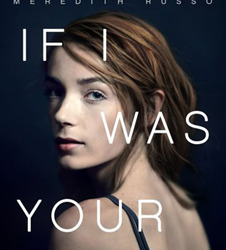
“If I Was Your Girl” follows the life of Amanda as she moves to a new town and a new school to escape the violent bullying she experienced. At her new school, Amanda decides to go “stealth,” omitting the fact that she is a trans woman from her new friends and boyfriend. Throughout the novel, Amanda falls in love with the hot football player, makes friends with the popular girls, and — spoilers — is crowned homecoming queen. She’s a normal girl with a normal life. In order to make Amanda’s transgender identity as palatable as possible to audiences, Amanda is portrayed as the perfect trans girl. Amanda is described as having “won the genetic lottery when it comes to passing” by her friend and trans mentor, Virginia. Amanda has supportive parents, was able to gain access to hormones at a young age, and has already had sex reassignment surgery by the start of the novel. In the author’s note, Russo explains this choice. “I have taken liberties with what I know reality to be . . . I have, in some ways, cleaved stereotypes and even bent rules to make Amanda’s trans-ness as unchallenging to normative assumptions as possible.” To her trans readers, Russo assures that there is nothing wrong with having a story that differs from Amanda’s. “I spent the better part of two decades trying to convince myself that I wasn’t something I knew myself to be because I didn’t fit a very specific, very toxic model of what society says transgender people are, and trust me when I say that my life story is radically different from Amanda’s.” (276). I will be honest; I have a complicated relationship with this book. Amanda’s transition being highly fictionalized made it difficult for me as a trans person to connect with the story. However, I greatly appreciate “If I Was Your Girl” for its commitment to educating its cis audience with kindness. While I can’t say this will be a book for everyone, it is still a valuable contribution to the Trans Archive project.
Content Warnings: Attempted suicide, rape (mentioned), sexual assault (in scene), physical assault, hospitalization, scars, guns, f slur, d slur, ableism re: psychosis, outing

The second novel I have chosen, “Dreadnought” by April Daniels, is about Danny, a closeted trans teen who, by means of circumstance, is given the powers of the legendary superhero Dreadnought when he falls out of the sky and dies in front of her. Upon receiving the previous Dreadnought’s powers, Danny gains super strength, near-invincibility, flight, and is transformed into the body she’s always wanted. Usually, I try to avoid magical transition tropes, but “Dreadnought” is the exception. Danny’s transition takes a shortcut, but this does not undermine her journey or the opposition she faces. In addition to learning how to be a superhero, Danny must handle her unplanned coming out. Danny’s father, to say the least, is an abusive transphobic scumbag, while her mother is more of a doormat. Nonetheless, Danny forge her own path with or without her parent’s support. When Danny joins Legion Pacifica (aka the good guy squad), she begins to make new connections and finds a new kind of family with Doctor Impossible, the Legion’s head scientist. “Dreadnought” has brilliant world building, found families, and tells a trans story that feels so authentic, even with superpowers thrown in the mix. I can’t recommend “Dreadnought” and its sequel, “Sovereign,” enough.
Content Warnings: transphobia, including a TERF superhero; homophobia, parental abuse
1 note
·
View note
Photo

transitions: what it means to be me
- Ash H.
more info below:
After reading the essay “Transition” by Julian Carter, I was inspired to think about what transition has meant in my life, with my gender and even beyond that.
I spent most of my young life as a girl. And I wasn’t too bothered by it, at first-- I loved my long hair, and every Halloween I would excitedly dress up as a princess. Most of my belongings were pink, as it was my favorite color. The leftmost picture is based off of what I looked like early on in high school, before I chopped all my hair off, that is. I wore baggy clothes like hoodies all the time to hide my body. By the end of my sophomore year, I had pretty much realized I was trans. I didn’t know how to describe it, but eventually being a trans man is what I settled with, and I ended up coming out to everyone between my junior and senior year of high school-- I couldn’t keep hiding it. The picture on the right displays me coming to terms with that masculinity a sort of late high-school/early college version of myself, with short hair, button-ups, always binding, always trying to appear as much of a man as possible.
The center figure is based on my current self. Something changed for me in college, in that I began meeting countless more queer and trans folks, people of every and all expressions. I stopped being so upset when my hair started growing out, reminiscing about my long haired days. I began expressing myself in new ways that made me feel more happy, and more ME than I had ever felt before; necklaces and earrings, hair dye and tattoos, cool and colorful clothing. I’ve grown to love myself in a way I’ve never imagined I could have.
I reflected a lot on why I had this especially masculine stage during my transition, and came to various conclusions. Internalized transphobia was absolutely a factor; I wanted to be stealth as a man originally, I didn’t want people to know I was trans, because I didn’t want to be trans. Femmephobia and toxic masculinity were also influences for sure. I saw femininity as not as valuable to me, despite at my core being a very feminine person, and felt like people would only take me seriously as a trans person if I was as masculine as I could possibly be. With that in mind, safety was of course also an influence. I came out during high school, in my small and conservative town, and I was terrified of the implications of standing out in any way. I just wanted to get through high school, and I did. And then of course, maybe I was also scared of being a stereotype. The stereotype of a scrawny white nonbinary boy with colored hair and piercings and neutral pronouns, something that I had seen insulted in various corners of the internet of thoughts of this type of person just being a girl who wants to feel special and stand out, a child who doesn’t fully understand themself, the kind of queer where their queerness and transness are their entire life and they won’t shut up about them.
I’ve learned to love myself, stereotype or not. It’s not easy all the time, never perfect, but I’ve surrounded myself with people who love me for who I am, and I wouldn’t be where I am today without them. I used to cringe at old pictures of myself, from early on in transition and before transition. But I don’t anymore, because I’ve learned to love these versions of myself as well, because being myself in these different ways has made me who I am today. I’m proud of being trans and queer. I wasn’t uncomfortable drawing any part of this, but instead felt compassion for this person who didn’t really understand themself yet.
To be honest, I still don’t think I completely understand myself or who I am, but I’ve come to peace with that fact. I might never have an exact definition for who or what I am. But sometimes, that is just a part of life, and the transitions we experience throughout life; whether I want to or not, I am going to change, and I won’t always be that person in the middle picture. Years from now, I might identify completely differently. And to me, that is just part of what goes into loving myself: loving who I was, who I am, and who I will be.
4 notes
·
View notes
Text
Ruby's Playlist!
.:MALKUTH:. /// Slither - selki girl
selki girl identifies herself as “transfemme” and “magickally queer” on her Twitter account @selkigirl. This song is off her debut album QABALISTA.
I Like That - Janelle Monae
Monae’s gender is ambiguous; she has alluded to being non-binary. This song is off her album Dirty Computer, and has been used in the Jordan Peele film Us.
My Hands - Like A Villain
Holland Andrews performs under the name Like A Villain. Their work has been featured on PICA’s website. This song is off their most recent album What Makes Vulnerability Good.
Delicate, Petite & Other Things I’ll Never Be - Against Me!
Laura Jane Grace is a very visible punk rock musician and came out as transgender in 2012. This song is off Against Me!’s album Shape Shift With Me.
Eudaemonia - Them Are Us Too
The members of Them Are Us Too are Kennedy Ashlyn and Cash Askew. Their bandcamp profile reads “femme 4 femme.” This song is off their album Remain.
This Hill - serpentwithfeet
Josiah Wise’s gender is not explicitly stated anywhere. This song is off his Apparition EP.
Brokeup - Arca
Arca is non-binary. This song is off the album Stretch 2.
Wish You Were Gay - Claud
Claud is non-binary. This song was released as a single and is also on the album Sideline Star.
Minute In Your Mind - Girlpool
Avery Tucker from Girlpool came out as transgender in 2017. This song is off their newest album, What Chaos is Imaginary.
(forever?????????) - glass beach
All four members of glass beach are gender non-conforming. This song is off their debut album, the first glass beach album.
https://open.spotify.com/playlist/0nJHU39W02zbYekPUVK8OZ?si=7aFk3McOTpOYbZYccqOuYw
3 notes
·
View notes
Text

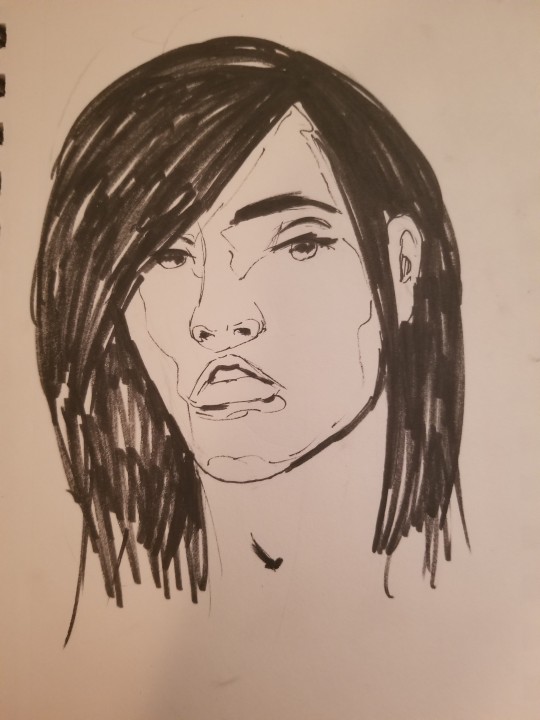



Five ways that AMAB (Assigned Male at Birth) non-binary folks might look, but the possibilities are infinite. These pieces act as a means of representation in order to broaden the narrow representation of non-binary AMAB folx online. For those who identify as such, coming to understand how they can present themselves without dysphoria can be a difficult task when a majority of representation relies on heavy makeup, feminine apparel, and maybe a few masculine touches (such as a beard), but those options are inadequate to represent the broadness of identity that being non-binary can have. Furthermore, most of this traditional representation assumes that androgyny is the goal, to strike that perfect balance of masculine and feminine, but that assumption is also woefully inadequate. Some folx may be comfortable with masculinity, some may be more comfortable with femininity, and some may be more comfortable with neither, where choosing to defy any and all gender norms is the goal, but in a society so steeped in gender culture, it can be difficult to find that space.
3 notes
·
View notes
Video
youtube
For my Transgender Studies Archive Project, I wanted to document my thought process on Black trans* and gender non-conforming artists visibility in mainstream music. For me, as a Black gender non-conforming person, I find myself in a double-bind. I identify with my Blackness first and foremost, yet am not generally affirmed in my gender and sexuality in the Black community. The same can be said for my Blackness in queer spaces. I hope documenting this exploration will bring some clarity to visibility in the mainstream for Black people.
- Andy
3 notes
·
View notes
Text
Marcy King
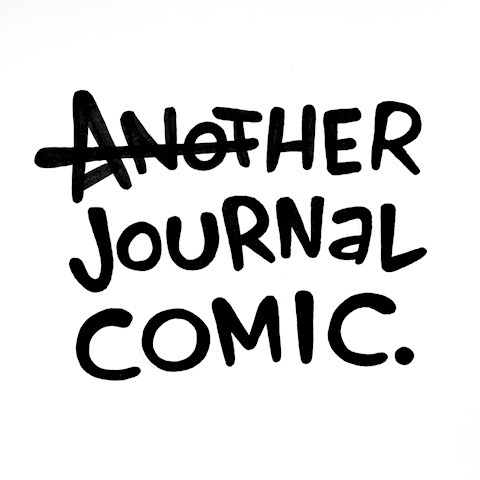
In this archive I am including local trans comic artist Marcy King.
Marcy was born a tiny village in the countryside of Wales and came to the United States in 2000. After living in Georgia for fourteen years, Marcy moved to Portland where she lives now with her artist partner and two cool dogs. Marcy has been working on an autobiographic journal comic about her life. Marcy’s lo-fi technique includes hand-drawing her journal comics with pen and pencil and uploading them without a scanner. In February 2020, a special edition of Marcy’s comic “A̶n̶o̶t̶her Journal Comic” was featured in the Gender Empowerment Issue of the Portland Mercury.
Visit and support Marcy here:
https://twitter.com/MarcyKingUltra
http://marcykingultra.tumblr.com
https://www.patreon.com/marcykingultra/posts
https://ko-fi.com/marcykingultra/gallery
From The Portland Mercury’s Gender Empowerment Issue 2/27/20
https://www.portlandmercury.com/gender-2020/2020/02/27/28050743/another-journal-comic
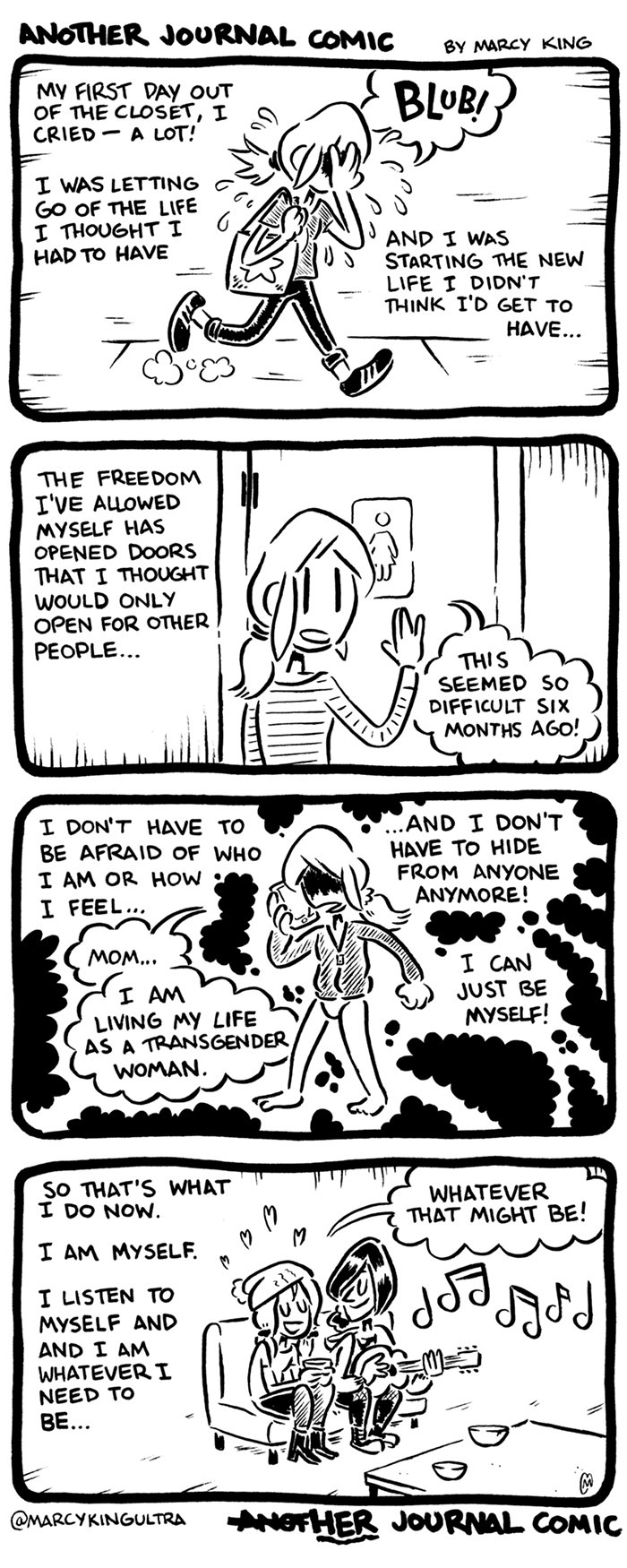
some assorted pages/days from Marcy’s journal comics

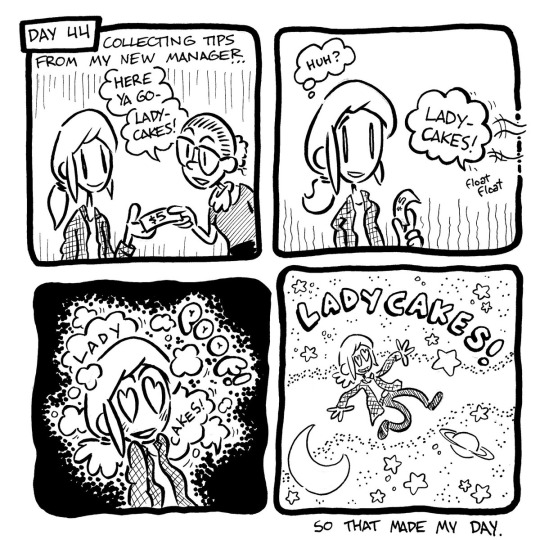


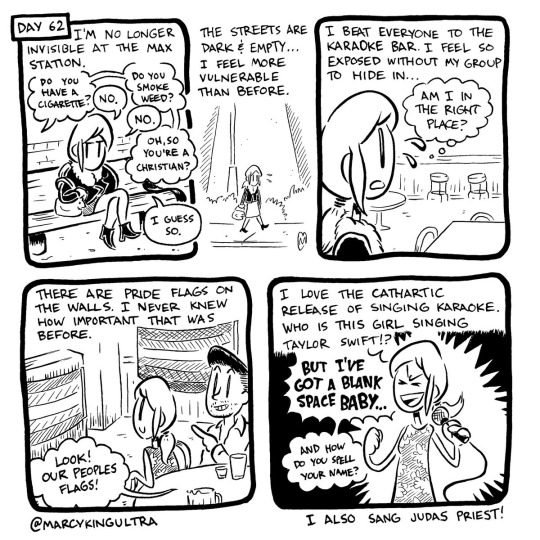
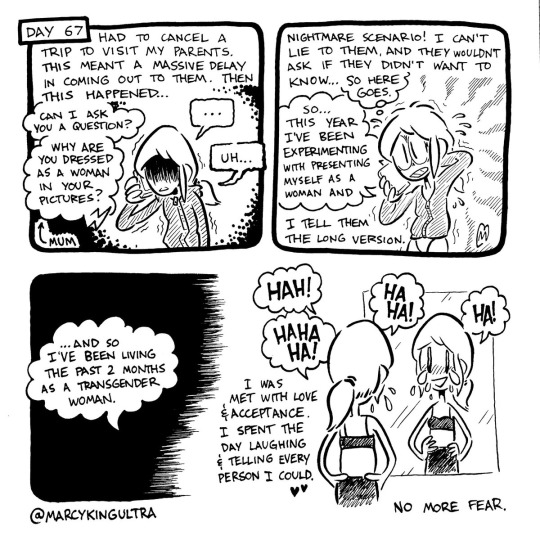
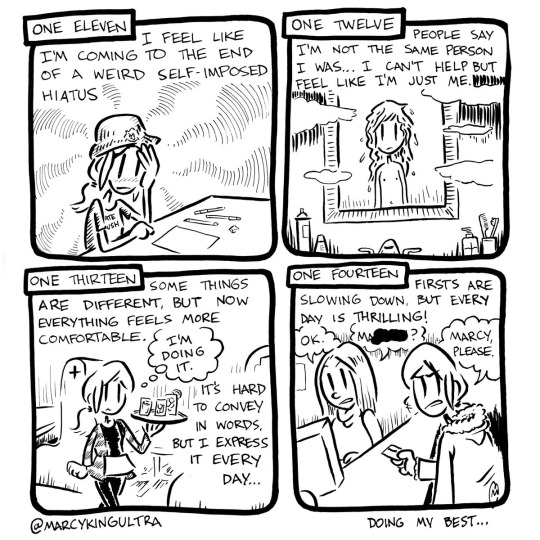
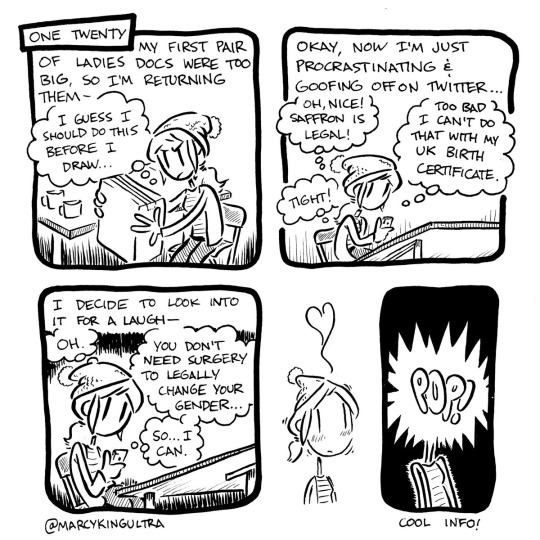
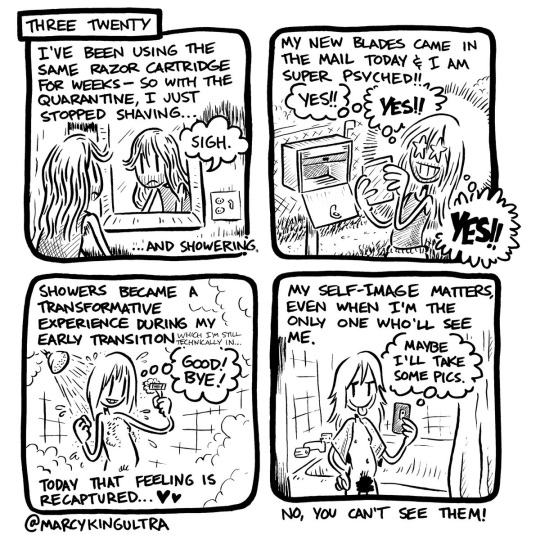
a production photo from Marcy’s Patreon page

JTPPG
1 note
·
View note
Text
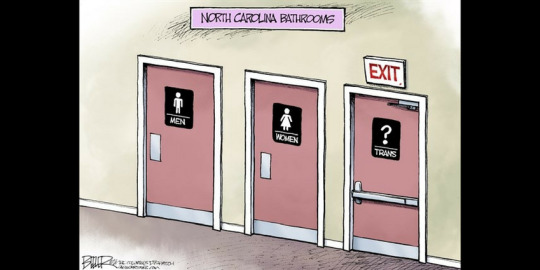
Bathroom bills are commonly referred to laws that restrict people to using the public bathroom that corresponds to their sex assigned at birth or their “biological sex.” Despite the name, these bills limit trans folk’s ability to access other sex segregated facilities, such as locker rooms. In most cases, these bills target local government and any institution that gets funding from the state, such as schools. Some of the bills however, do target private spaces, such as private clubs, and even all bathrooms in the state. There are many states that have tried to pass these bills in 2017 alone: those states are Alabama, Arkansas, Illinois, Kansas, Kentucky, Minnesota, Missouri, Montana, New York, North Carolina, South Carolina, South Dakota, Tennessee, Texas, Virginia, Washington and Wyoming, with North Carolina being the only state to actually pass the bill (HB 2). The bills that have been proposed in the other states have all failed to pass[1].It is not all doom and gloom however, as there are more states that have anti-discrimination laws on the books than the 17 stated above: those states are California, Colorado, Connecticut, Delaware, Hawaii, Illinois, Iowa, Maine, Maryland, Massachusetts, Minnesota, Nevada, New Jersey, New Mexico, Oregon, Rhode Island, Vermont, Washington, and Washington D.C.[2][3]
There are of course, many issues that will arise from these forms of legislation, including how to classify one’s sex and how to determine their sex. Most bathroom bills define “biological sex” as “determined by anatomy and genetics existing at the time of birth” which uses a person’s birth certificate as “proof” of their sex.[1] This language clearly means to target trans and non-binary folks and is an important aspect of the bill. These bathroom bills were created to protect cisgender woman from “sexual predators.” The bills never say who these “predators” are, but conservative groups always point at trans woman as being these “predators.” These conservatives always call trans woman “men feigning a trans identity” or “men pretending to be woman.”[4] So really are these bills trying to protect ciswoman from trans woman? Because if that’s how conservatives view trans woman then really cisgender men are the issue and not trans folks, but clearly facts do not mean anything to them. But even still, there are many issues with these bills, namely that they are not even meant to protect anyone, but rather to attack trans folks.
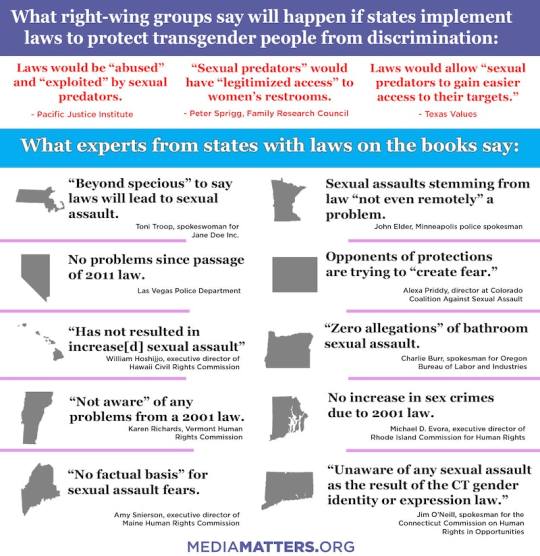
These bathroom bills will never work, as many states that have anti-discrimination bills do not have any cases of trans folks assaulting anyone in bathrooms[5] (it’s always the opposite),[6] but instead the bills needs to be examined further to really understand what they are trying to do. Bathroom bills closely align to many ideas around neoliberalism that Spade discusses in Normal Life, including heightened policing, exclusion, gender norms. By creating a legal framework that classifies who can use which bathrooms, it gives people a way to perpetrate trans folks because they are trans. The majority of the bills have to define what “biological sex” is in order for these bills to work, but this creates a definitive line of who is male and female, which will lead to the exclusion of trans folks from societies ideas of gender. Along with exclusion, the way that the bills create a definition of “biological sex” also creates a structure that reinforces the gender binary, and creates a framework to legally enforce the binary. With the introduction of legality, there also becomes a framework to create a police force that will enforce those laws. Now that police would be able to enforce this bill on trans bodies, it allows for yet another way to criminalize and jail trans folks for doing a basic human need.
On its surface, the bathroom bills that are presented in state legislators are awful at best, but by looking deeper and applying information gained from transgender studies, it can be seen that these bills are much more sinister. These bills create legal frameworks to create and enforce the gender binary, and decrease the quality of life for trans folks. These bills would ultimately not protect anyone using restrooms, but would instead exacerbate “trans panic” defenses and just make trans folks lives even harder.[6] Thankfully there are no bathroom bills that are currently on the books (North Carolina’s bathroom bill was repealed after major backlash from corporations,[7][8] which is an analysis for another time), but many states have repeatedly brought these bills up for debate, so it is essential to make sure to attack these bills if they were to ever crop up again.

*Note: North Carolina’s bathroom bill was later repealed on March 30, 2017
References
“‘Bathroom Bill’ Legislative Tracking.” Accessed June 5, 2020. https://www.ncsl.org/research/education/-bathroom-bill-legislative-tracking635951130.aspx.
Ballotpedia. “Transgender Bathroom Access Laws in the United States.” Accessed June 6, 2020. https://ballotpedia.org/Transgender_bathroom_access_laws_in_the_United_States.
Know Your Rights | American Civil Liberties Union. “LGBTQ Rights.” Accessed June 5, 2020. https://www.aclu.org/know-your-rights/lgbtq-rights.
Bixby, Scott. “This Lawmaker Wants to Make It Illegal for Transgender People to Use Bathrooms.” Mic. Accessed June 6, 2020. https://www.mic.com/articles/110314/this-lawmaker-wants-to-make-it-illegal-for-trans-people-to-use-bathrooms.
Maza, Carlos, and Luke Brinker. “15 Experts Debunk Right-Wing Transgender Bathroom Myth.” Media Matters for America. Accessed June 6, 2020. https://www.mediamatters.org/sexual-harassment-sexual-assault/15-experts-debunk-right-wing-transgender-bathroom-myth.
National Center for Transgender Equality. “U.S. Transgender Survey.” Accessed June 7, 2020. https://transequality.org/issues/us-trans-survey.
Hohmann, James. “The Daily 202: How Bathroom Bill Backlash Cost North Carolina’s Republican Governor His Job.” Washington Post, December 6, 2016, sec. PowerPost. https://www.washingtonpost.com/news/powerpost/paloma/daily-202/2016/12/06/daily-202-how-bathroom-bill-backlash-cost-north-carolina-s-republican-governor-his-job/58461d5de9b69b7e58e45f2b/.
NBC News. “North Carolina Repeals Controversial ‘Bathroom Bill.’” Accessed June 8, 2020. https://www.nbcnews.com/news/us-news/hb2-repeal-north-carolina-legislature-votes-overturn-controversial-bathroom-bill-n740546.
Further Readings
Gozlan, Oren. “Stalled on the StallReflections on a Strained Discourse.” TSQ: Transgender Studies Quarterly 4, no. 3–4 (November 1, 2017): 451–71. https://doi.org/10.1215/23289252-4189919.
National Center for Transgender Equality. “U.S. Transgender Survey.” Accessed June 7, 2020. https://transequality.org/issues/us-trans-survey.
Maza, Carlos. “Debunking The Big Myth About Transgender-Inclusive Bathrooms.” Media Matters for America. Accessed June 6, 2020. https://www.mediamatters.org/fox-nation/debunking-big-myth-about-transgender-inclusive-bathrooms.
1 note
·
View note
Photo
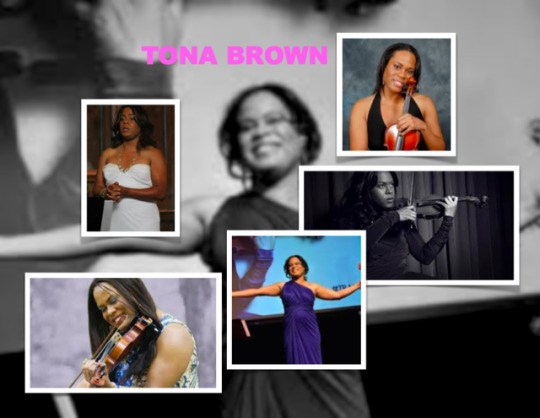
Tona Brown is an American violinist and mezzo soprano vocalist. She is based in Virginia. She was the first Black trans woman to perform at Carnegie Hall as holds many other accolades, such as performing in front of the Obamas. She released her debut album “This Is Who I Am” in 2014 and works as a violinist and vocalist coach. Below are a set of links to connect with her:
Huffington Post Article:
https://www.huffpost.com/entry/tona-brown_n_5373411
Website:
http://tonabrown.com/
Twitter:
https://twitter.com/tonacity
Instagram:
https://www.instagram.com/tonacity/
YouTube Channel:
https://www.youtube.com/channel/UCGb3cnbTPLQ23hJcPYFYXMg
1 note
·
View note
Text
On Contrapoints, Yekaterina P
Contrapoint is a Baltimore based youtuber who is a part of what is sometimes called ‘Bread Tube’, which is leftist and creates content aimed at education and leftist ideas. Contrapoints name is Natalie Wynn she is a Trans woman who has publicly transitioned on YouTube. Her content is education, she touches on many different subjects, such as the philosophy of beauty, the notion of the ‘west’, as well as rebuttable to right-wing extremists in hopes of de-radicalizing right-wing extremists as well as incels. Here are three of her videos that are focused on different topics referring to the Trans experience.
https://youtu.be/9bbINLWtMKI
This first video is called “Pronouns” this video is a rebuttal to Ben Shapiros claims about Trans people. Ben Shapiro argues that “Facts don't care about your feelings” and Natalie responds by saying that she doesn't want her gender to be tolerated, she wants to convert people. She also says that Shapios deceptively frames the discussion around biology, when in actuality it is about language, or the proper use of words. Natile uses the example of Blaire White and Transwoman and conservative and her discussion with Shapior. Blaire uses the analogy of adoption, which works well and stumps Shapior. Natalie also talks about how performing gender is not the only thing that matters, that “Trans women are women because we live the lives of women.”
https://youtu.be/EdvM_pRfuFM
In this video called “Transtrenders” Natalie presents a debate between to fiction characters to better show the ways people engage in the conversation about people who are Trans and people who are non-binary. Her character Tiffany Tumbles says that she is Transexual, that she has a mental illness, that her gender expression is not a trend, it is a diagnosis. That she (Tiffany Tumbles) does not like nonbinary people or people who express themselves in unorthodox ways because she feels like they invalidate her or as she put it “You don't have medical condition you have a fashio disaster.” The character Tiffany is debating (also played by Natalie) is called Baltimore, they are nonbinary and say they dress this way to express themselves, not to invalidate people like Tiffany. Baltimore also challenges Tiffany on her Transcendentalism, asking “Have you ever seen your brain? Did your doctor see your brain before you were prescribed hormones?” they also challenge Tiffany by saying that “So you got hormones because of your feelings, why then are your feelings about your gender valid but mine are not? You don't think you're real until a man in a coat sings a prescription pad”. The main argument of this video is that shaming nonbinary people is unhealful because even if they do decide they are in the binary the stigma can keep other nonbinagr and trans people in the closet.
https://youtu.be/1pTPuoGjQsI
This last video is a response to TERFs or “Gender Critical”, which is also the title of the video. In this one Natalie answers ‘Troll Questions’, questions that trolls ask that require complex and nuanced answers. This video is broken up into 8 parts they are as follows; Gender metaphysics, in which Natalie says that Trans people often use metaphysical language to describe feelings that are hard to put into words. The second is Gender Stereotypes, to which she says that no- her clothing and makeup do not make her a woman, that no Trans woman thinks that femininity and womanhood are the same thing. Rather Trans women are using the cultural language of feminine signifiers to prompt others to see them as what they are, i.e. women. Next is Abolish Gender, she says that perhaps it would be good to abolish gender, but that that is a utopian project. That when you say that you are targeting people most vulnerable under the system then leveraging that same system against them under the pretense of abolishing it. The fourth is male Privilege, to that Natalies response is that now since she has transitioned, she does experience street harassment and other forms of toxic masculinity. And that when a Trans woman doesn't ‘pass’ the society around her does not then default into treating her as a man, instead they treat her even worse. The fifth is Male socialization, Natalie concedes that it's kind of true, most Trans women did not experience that trauma of girlhood. But she says that socialization does not end at childhood, and that this largely depends on when a person transitions. She also makes the poin that many Trans people were Queer or feminine growing up so they did not benefit from male privilege as much as a cic man. The sixth point is Reproductive oppression, to which she says that not all cis women feel that things like childbirth define them as women either. The seventh is Erasing Female Vocabulary, to which she says that there is no one saying that female specific words need not be used, and that words we have now such as “pregnant people” are not erasing women, just including Trans men and nonbinary people. The last is that TERF is a Slur, to which Natale says no it's not, it's derogatory.
1 note
·
View note